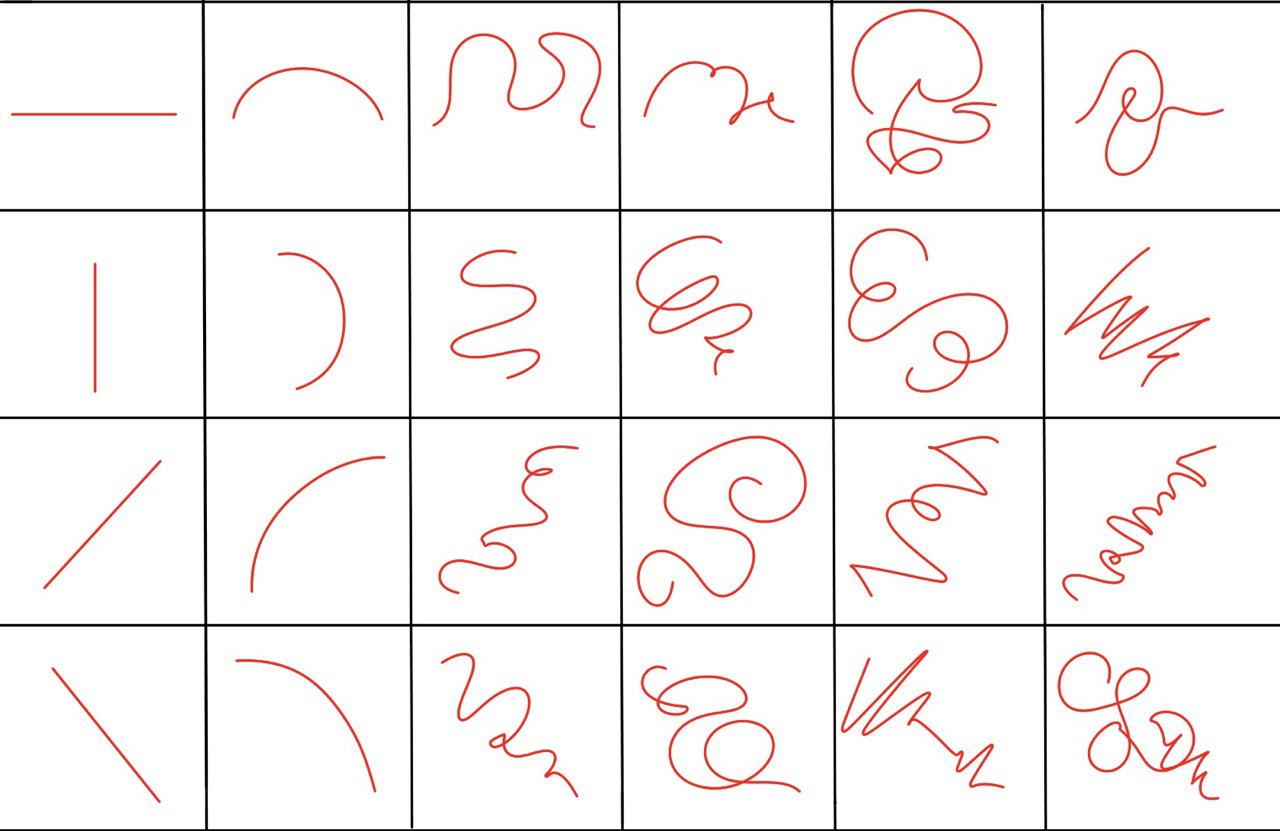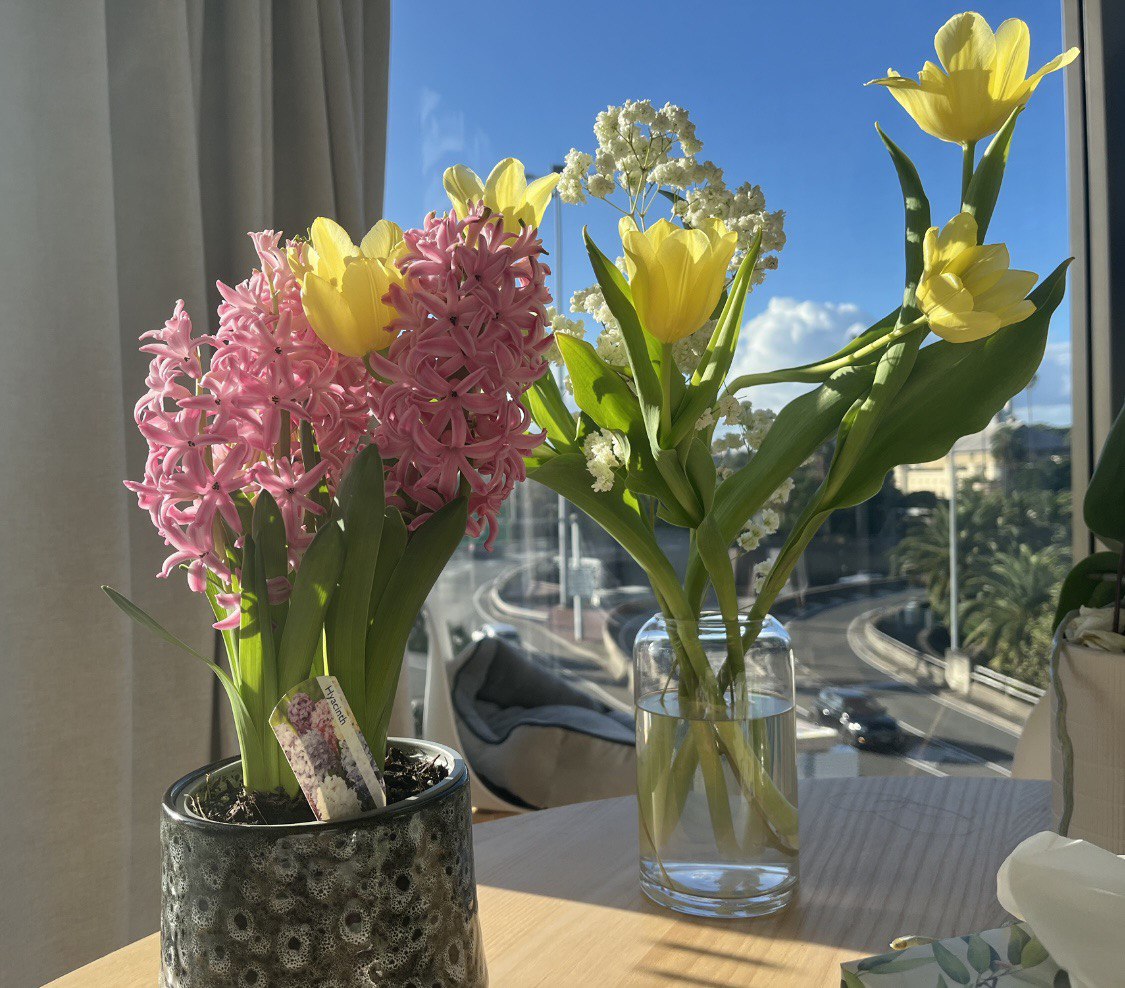The Missing Piece in Language

On White II - Kandinsky
Inspired by the first chapter of the book of “POINT AND LINE TO PLANE - Kandinsky”, which describes from geometric perspective, what does a point present - “We look upon the geometric point as the ultimate and most singular union of silence and speech”, what an innovative way of define the purpose of point! I had never thought about anything regarding point except for checking the price tag (always hoped to move the dicemal point few digit to the left, but … anyway), so, I decided to do some of my own experiment on ipad…
I started my experiment by thinking about how different feelings can be created with merely vertical and horizontal lines.

Horizontal - Sophia Zhang
I quickly drew some vertical lines on the iPad for my vertical line image before rotating the same image 90 degrees to create a horizontal one because I didn’t want to unintentionally make any other changes to it.
Looking at the horizontal image as a whole, it reminds me of the view of the moving trees and houses when I rode the maglev in ShangHai. Everything moves so fast — the maglev’s top speed is 300 km/h, and it only takes two minutes to reach that speed — that the view from the outside collapses into few horizontal stripes of contrasting colours.
When you stare closely at the horizontal image, your eyes seem to travel in the same direction as the lines, and the space appears to be growing as your eyeballs move, and you don’t feel too confined.

Vertical - Sophia Zhang
However, the vertical lines give me the impression that I’m being pressed against a prison wall. As soon as I move my eyebow from left to right, a bar suddenly blocks my path. I then proceed in the direction of the line, only to discover that there is no other way out of current cell. When I took a step back and try to look at the image as a whole, it feels like an unexpected storm in Sydney, when the rain falls like a river pouring from the sky. As you can observe from the image, the wider the vertical lines are, the closer the rain drops to you. While the thin and vague lines are the rain drops in the background.
Is it just me who feels this way?
It is also widely believed that wearing clothing with vertical lines will make your legs appear longer and that wearing horizontally striped clothing would make you appear chubbier. Hmm… the orientation of the line definitely affects our perception ʕ •ᴥ•ʔ.
Interesting! I decided to expand the small experiment to include more variety - by given a set of two points, and see how many different path we can create between the two points, and essentially, try to discover the hidden emotion correlated with the different path that connects two points.

What can possibly happen between two points - Sophia Zhang
Wow, it’s amazing! I have never realized it could be so interesting to connect two points! ☉_☉
While it seems much work will be needed before I can analyse the emotion these indiviudal paths carry, but I do find something interesting:
-
The more space the path takes, the more sophistication it adds when drawing the path, some of the paths almost look like symbols in Greek.
-
There are infinite possibilities for creating a path between two points.
-
Sharp turns give less pleasant (more anxious) feelings than a smooth curve.
The first two bullet points make me ponder on the characters I use - the Chinese characters and the alphabet symbols - both of them are based on limited combination of paths from one point to another. And combinations of the alphabet symbols (Chinese characters) create words which carry exact meanings that are understood by the users of the language. The symbols are protocols for communication, and the purpose for communication is seeking understanding and empathy. The symbols, after thousands of years of improvement, make the words so easy to distinguish and use, thus making communication incredibly effective.
However, does our near-to-perfection symbol system satistfy our needs for expression? I don’t think so; for example, I frequently have trouble expressing just how joyful I am, and I can’t adequately articulate how I feel when I’m sipping my morning tea and observing the sunlight kissing the face of a yellow tulip and watching a hyacinth straighten her skirt….
Where is the place of art in here?
Although ambiguous and ineffective, art can represent feelings and emotions that the language cannot, and is therefore richer than the language! It seems that art would be useful for capturing the moments that words cannot adequately describe, but after being trained to communicate and think in modern languages, I found it difficult to form my thoughts in the form of art. This is because my thoughts are already formed as an inner voice speaking the language I am familiar with.
Returning to my morning tea, here is the emotion that I am unable to fully convey while yet making a decent photographic record. (what a capable machine for producing art! ヾ(´〇`)ノ♪♪♪)

My morning tea - Sophia Zhang
What is the biological justification for the language? Does it exists only for the survival of our species?
Thank you for taking the time to read this blog post. I hope you found it interesting and thought-provoking.